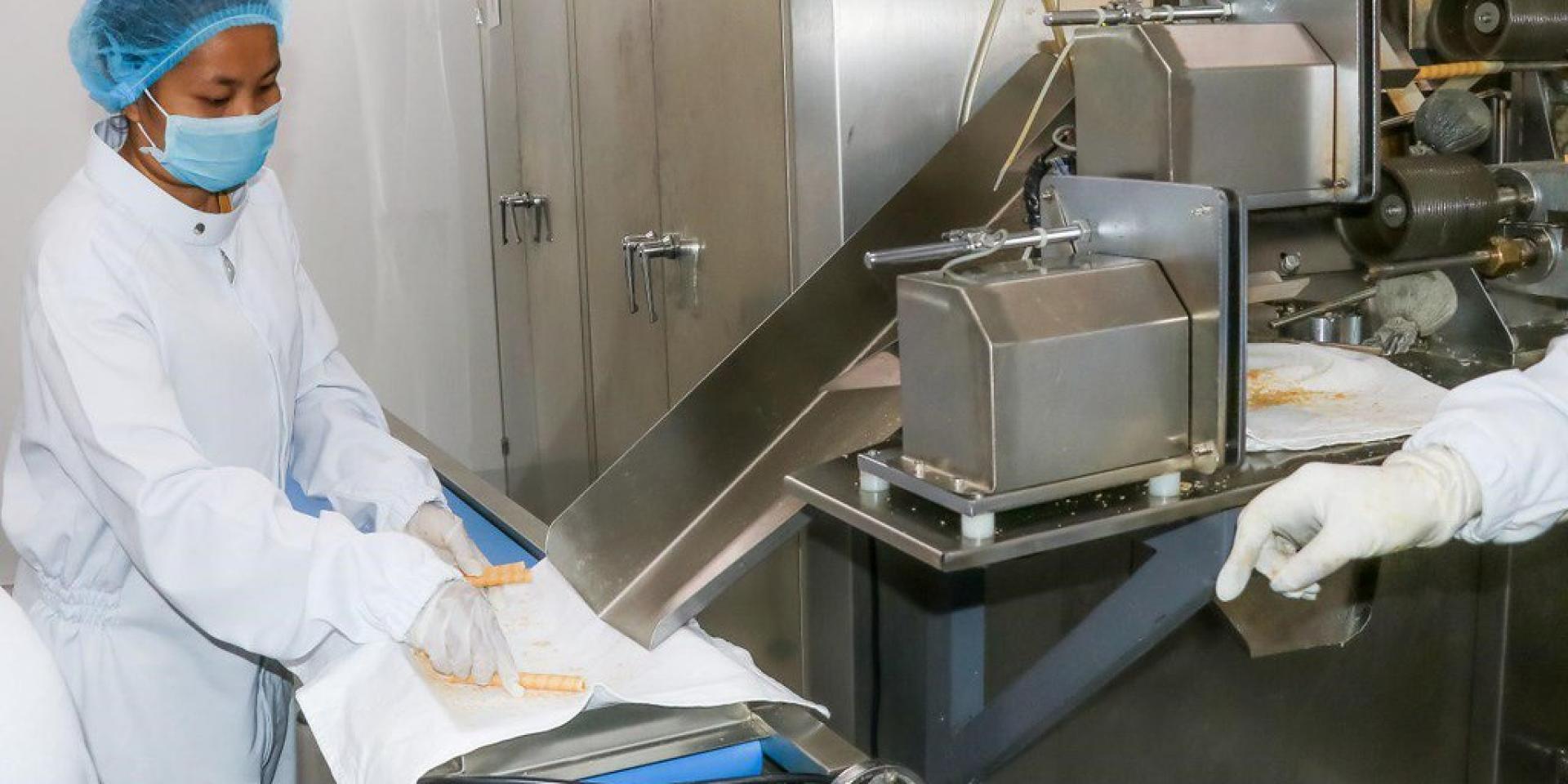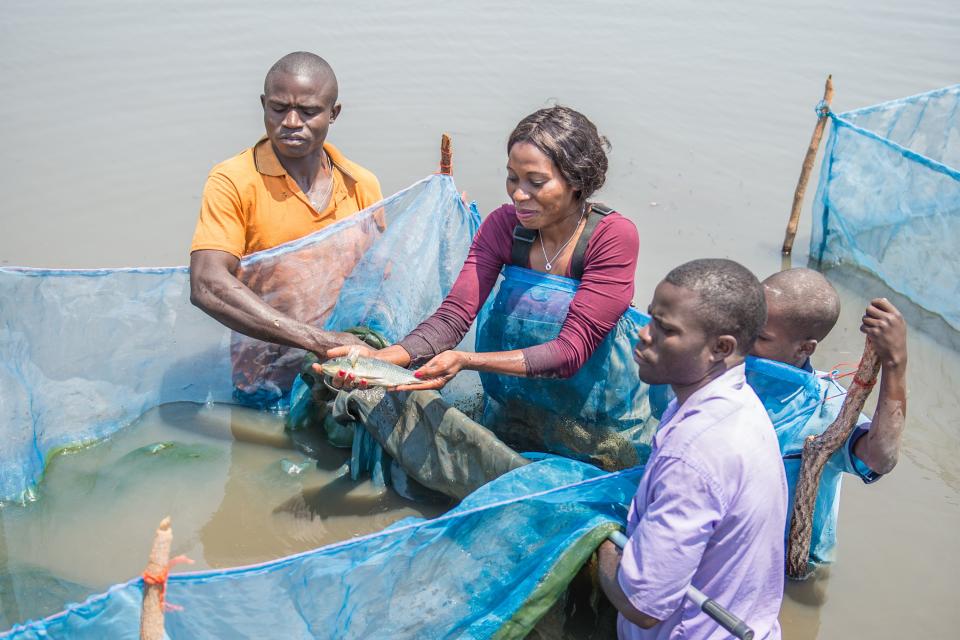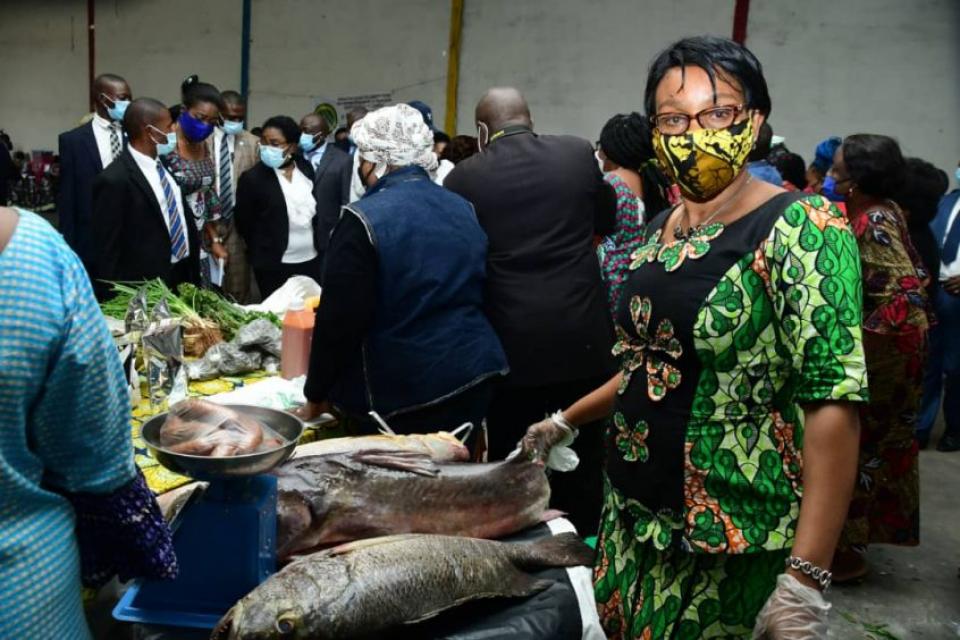6 aquatic food system innovations transforming women’s livelihoods
 Photo: WorldFish
Photo: WorldFish
One in every two workers in aquatic food systems are women. Some of these women work directly in fisheries and aquaculture production, while the majority work in the processing, sale, and trade of aquatic foods and products. Women are crucial to aquatic food systems, providing labor, innovative ideas, and entrepreneurship. Their contributions are critical to food and nutrition security, gender equality, and multiple Sustainable Development Goals.
Gender bias, outdated assumptions, and the lack of visibility in food system policy block women’s full participation in aquatic food systems and thus hold back true food systems transformation toward more healthy and sustainable diets. COVID-19 has intensified many of the disproportionate burdens that women face, critically impacting access to job opportunities and nutritious foods. ‘Building Forward Better’ requires the full participation of women in crucial response and recovery efforts.
Applying a nutrition lens to aquatic food systems, through nutrition-sensitive approaches, is sparking multiple innovations from production to consumption that challenge gender bias and champion the role of women in low- and middle-income countries.
What are nutrition-sensitive approaches in aquatic food systems?
Nutrition-sensitive approaches put human health and nutrition as a principal objective in the management of aquatic food systems, such as fisheries and aquaculture. Nutrition-sensitive approaches are multipronged, producing innovations at multiple entry points to the food system, from production, post-harvest, marketing to consumption and waste. Pioneered by WorldFish and partners in the One CGIAR and beyond, these approaches are fostering women’s engagement in aquatic food production, improving equal access to resources and entrepreneurial opportunities, and boosting the consumption of diverse, nutritious diets.
Innovation 1: Integrated land and water food production systems
Nutrition-sensitive approaches in fisheries and aquaculture encourage the integrated production of diverse fish species together with vegetables in backyard ponds, coastal and inland waters, such as fish-rice systems. The multidimensional approach educates both women and men on the health and nutrition benefits of consuming diverse foods and developing their capacity around polyculture pond practices–which sees large fish like carp species grown together with small indigenous fish species–integrated with the cultivation of diverse vegetables, such as vitamin A-rich orange sweet potato.
With more food in the homestead farm, women have the opportunity for an additional income source, improving their finances, hence expanding their roles in household management and decision-making. A key success of this initiative is the shift to the cultivation and consumption of small fish. Small fish are a superfood, rich in multiple essential micronutrients, including iron, zinc and vitamins B12 and A and essential fatty acids, as well as animal protein. Vitamin B12, obtainable only from animal-source foods, is essential for brain and cognitive development of young children.
Nutrition-sensitive aquatic food systems were first pioneered by WorldFish and partners in Bangladesh. Today, the innovation has been adopted by over 700,000 households with numbers increasing thanks to the Government of Bangladesh, which has backed the innovation in its growth policy. The approach has also been scaled and adapted in Cambodia and Myanmar, India and parts of Africa.


